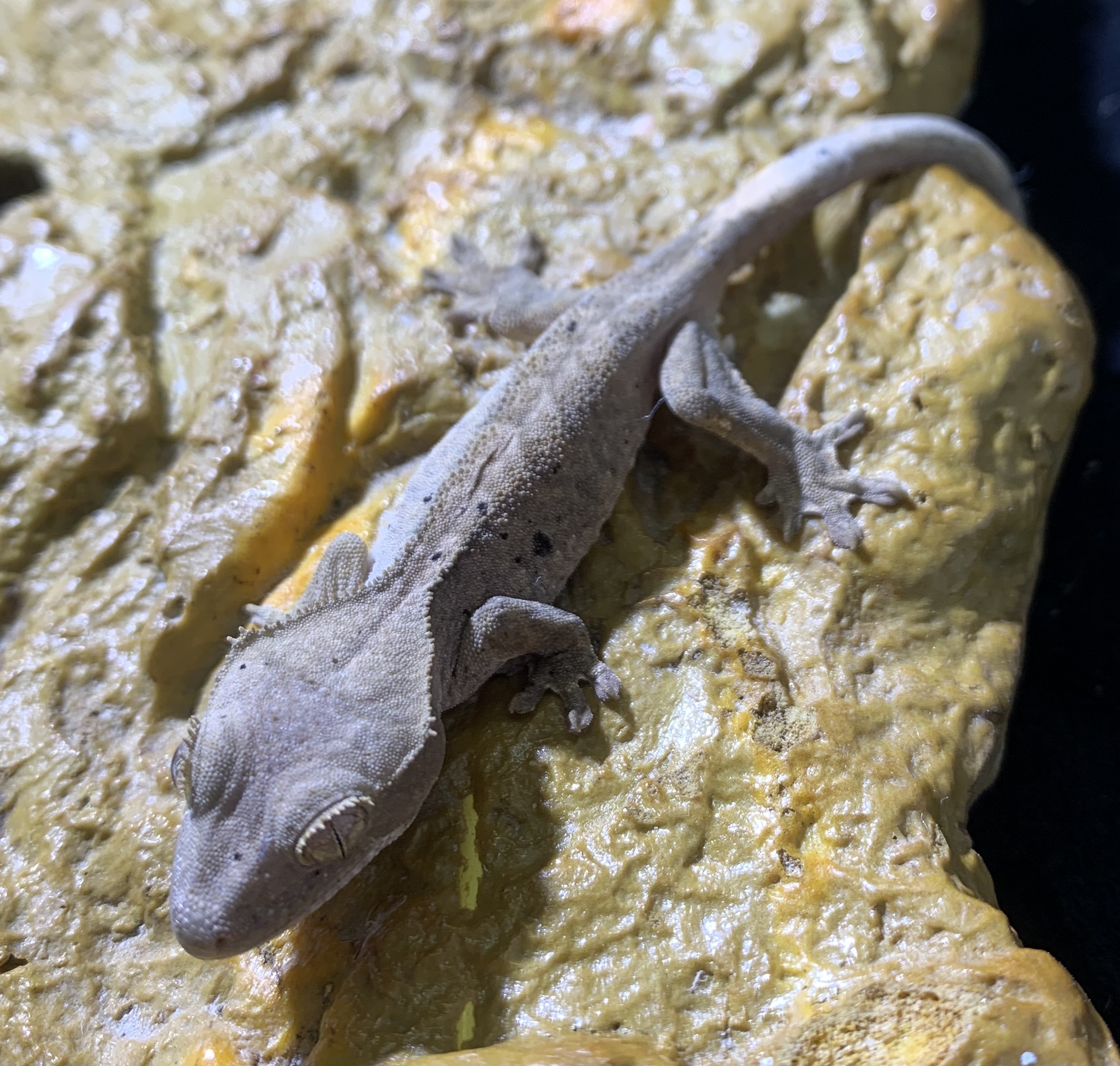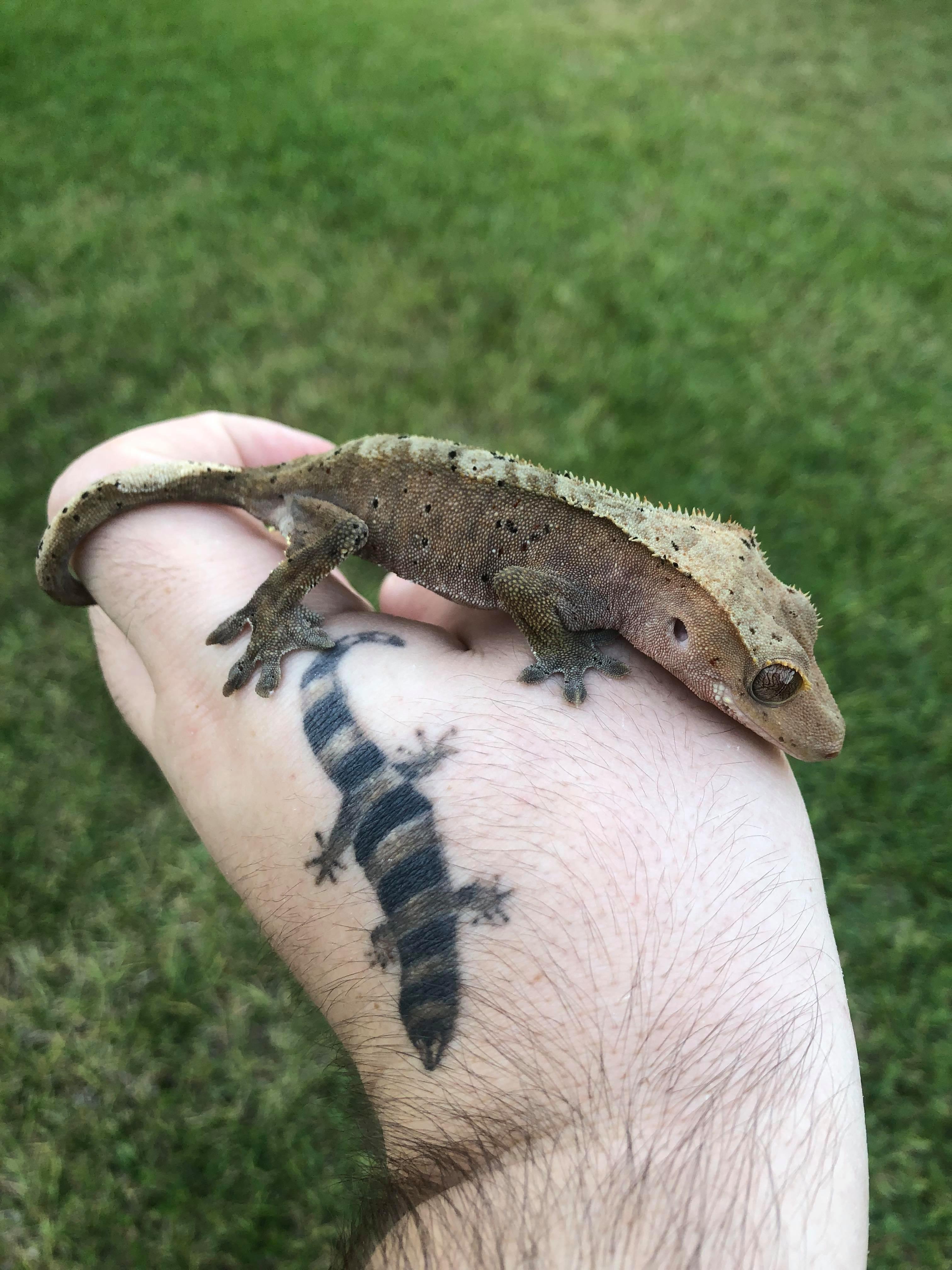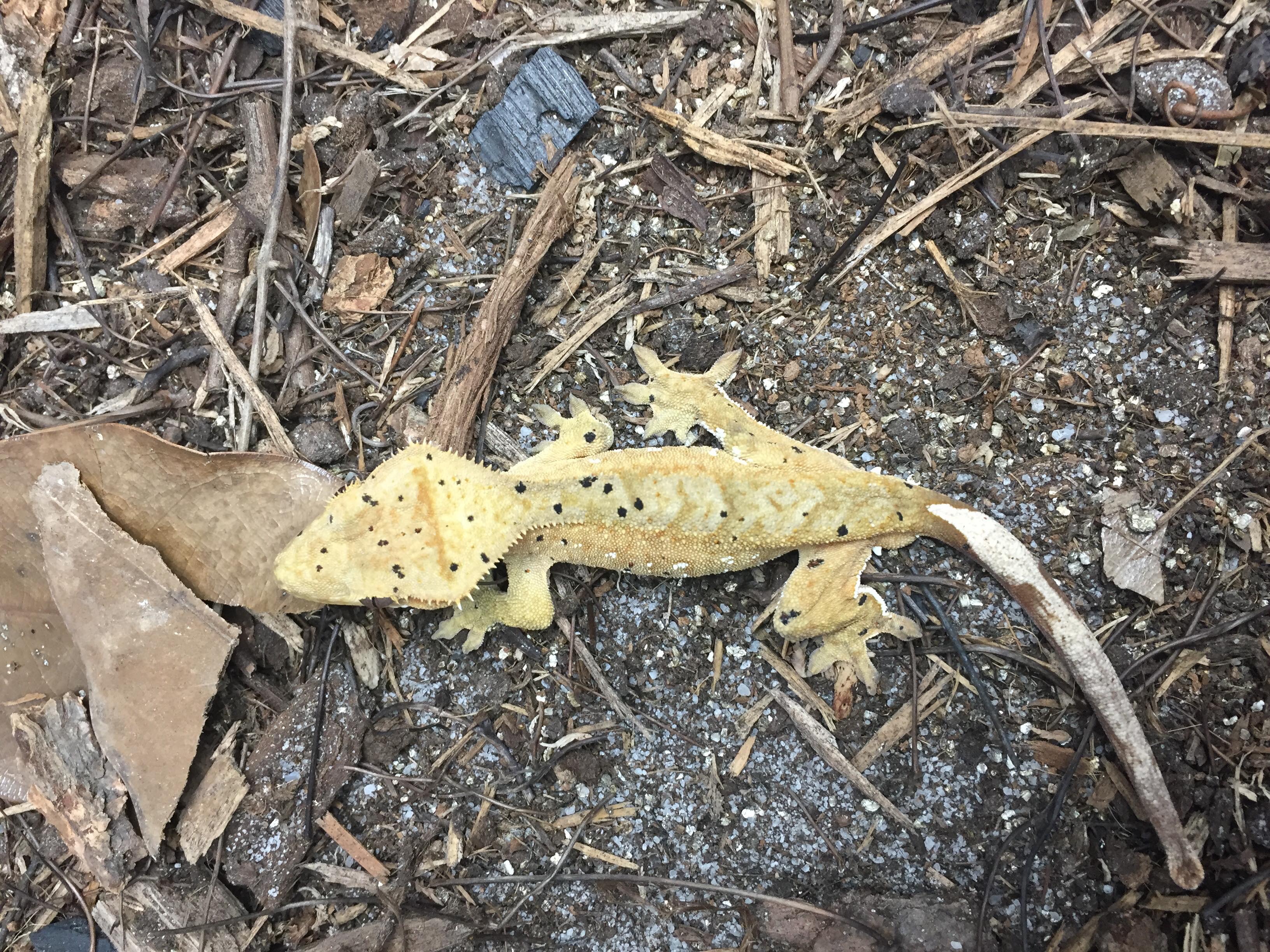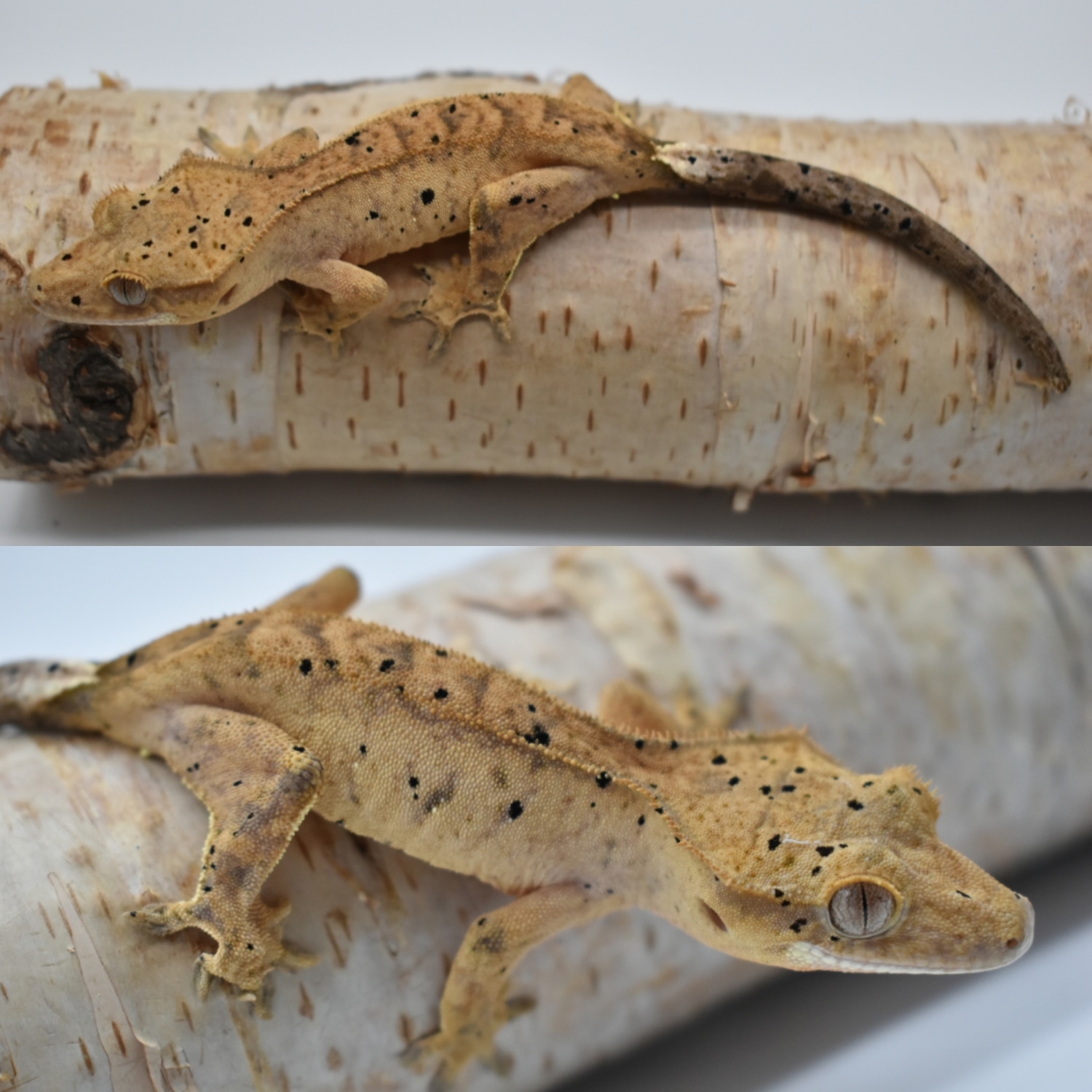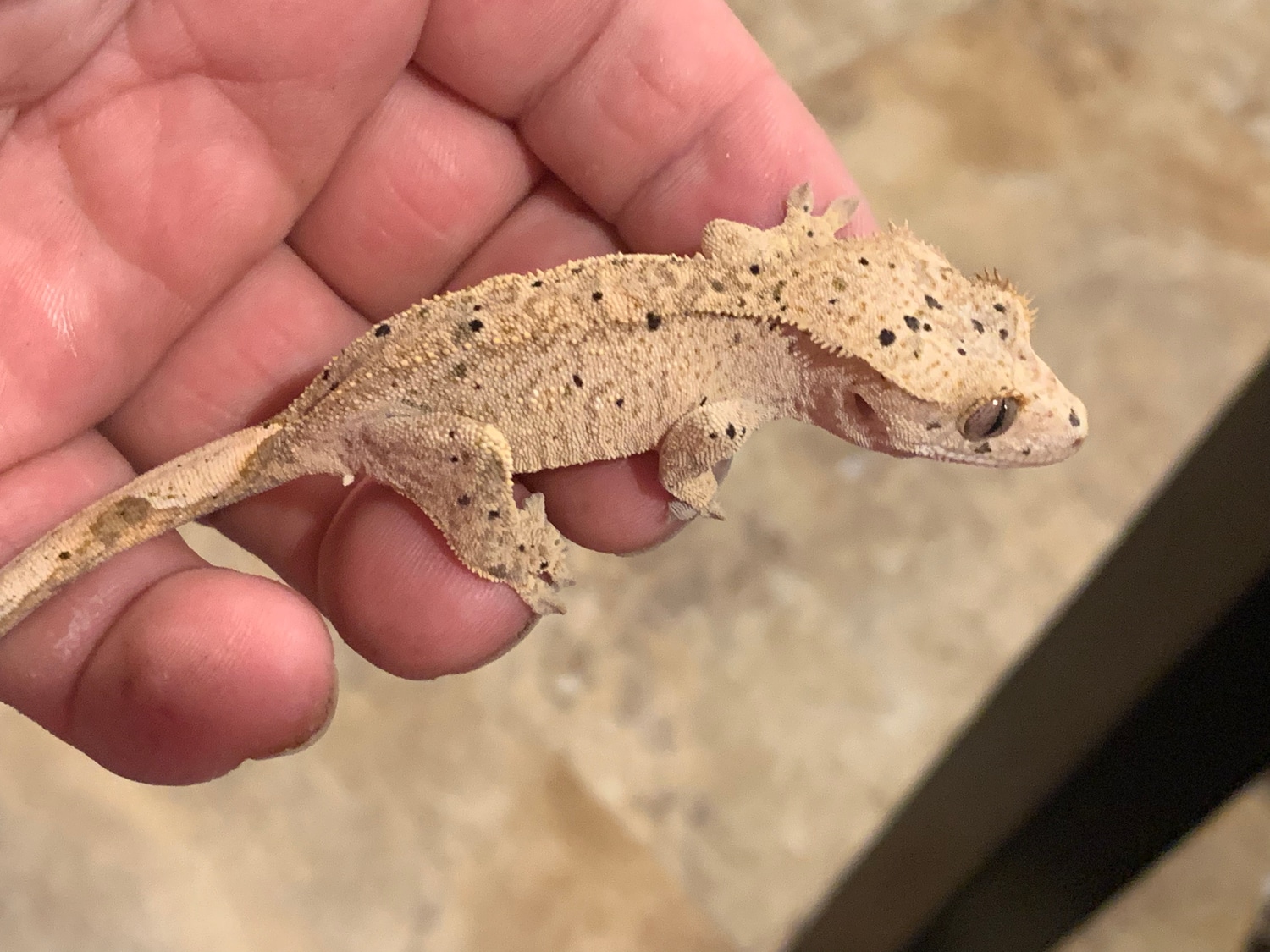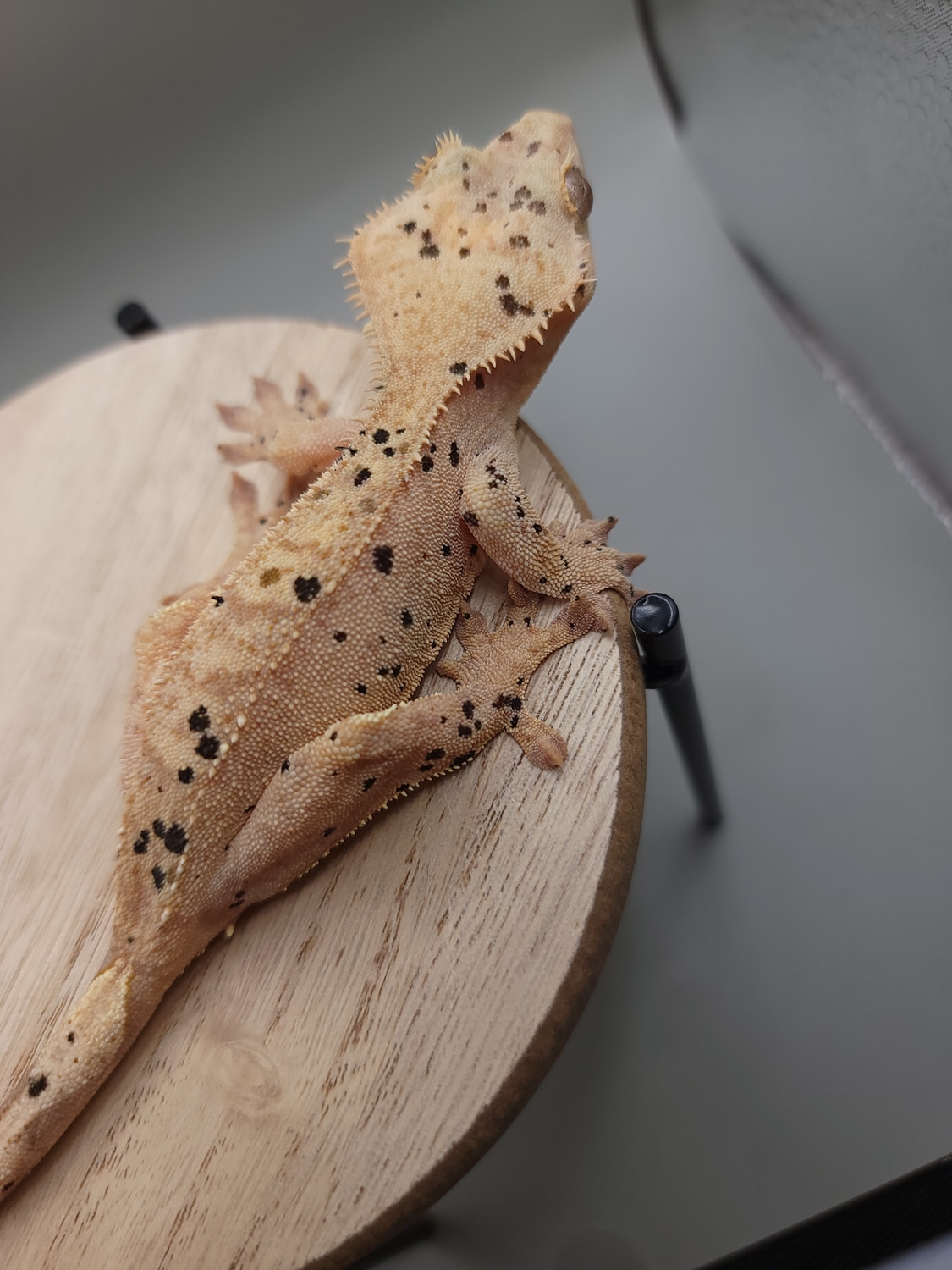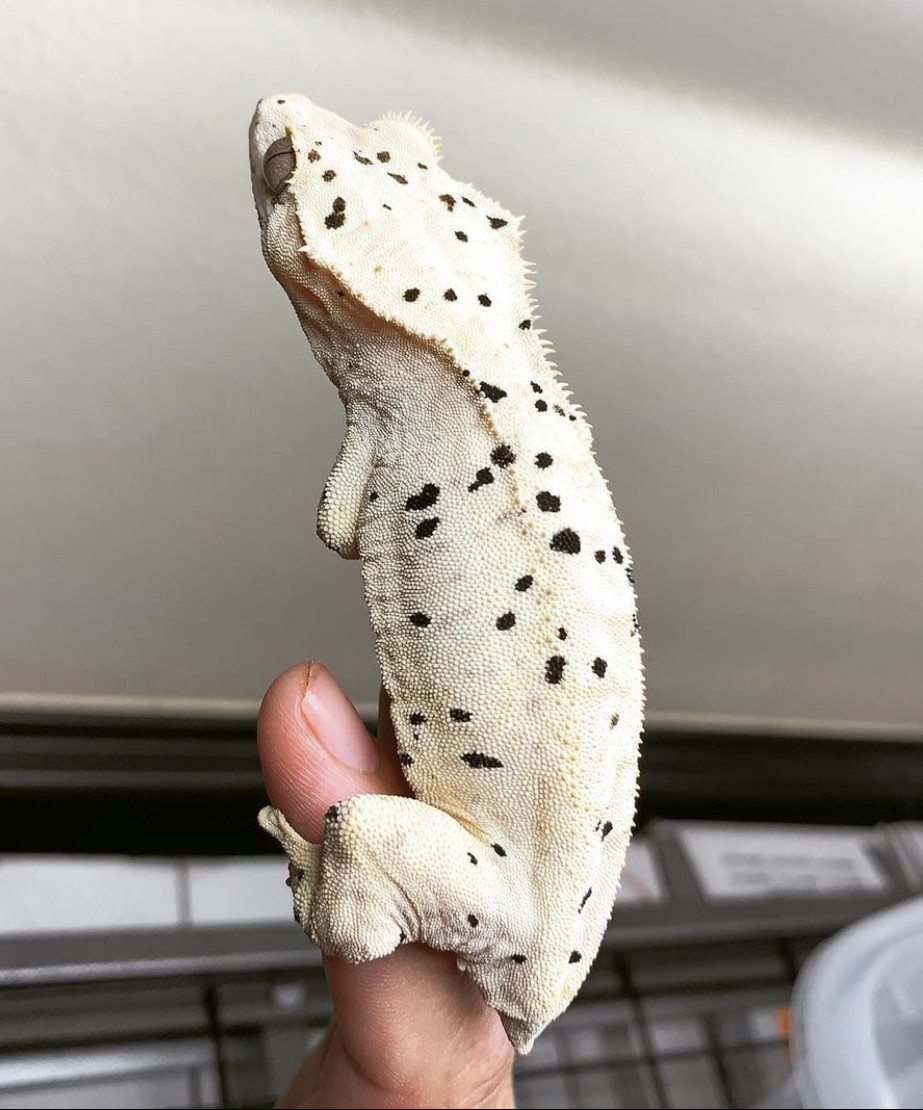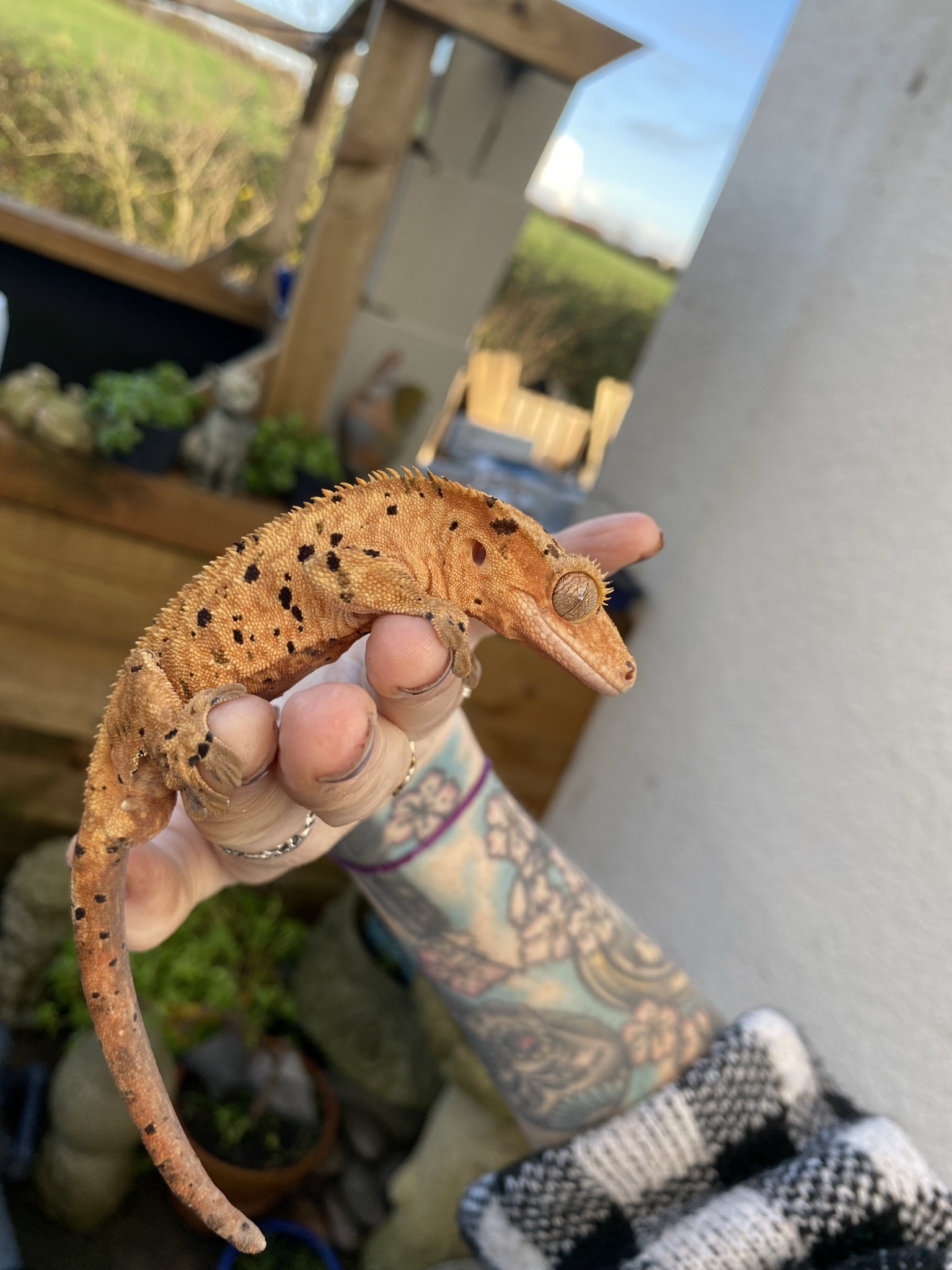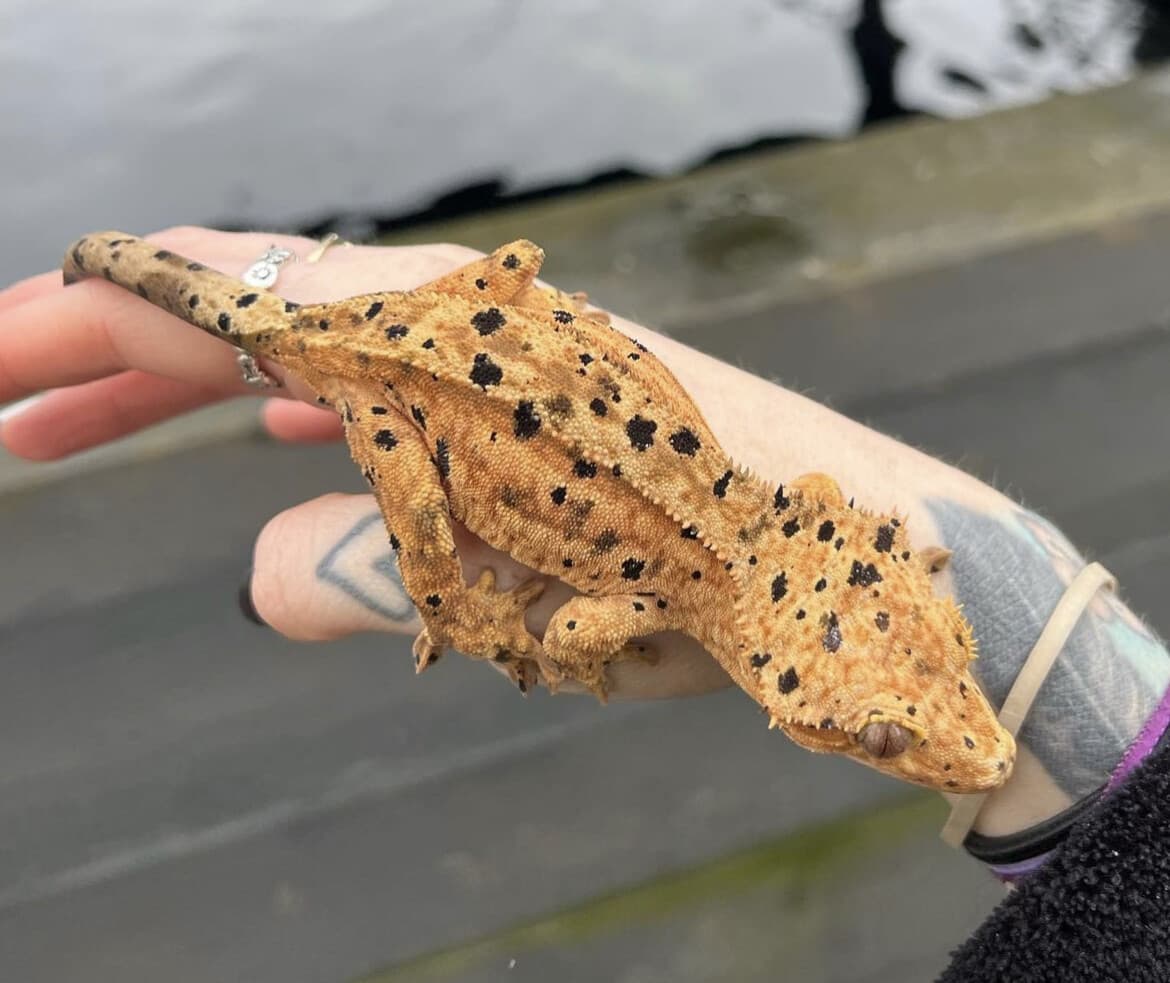Dalmatian
Type: Dominant
Aliases: Dal, Genotype D
Issues: N/A
First Produced In: Unknown
Availability: Common
Last Updated: 2022-12-21
Do you have any suggestions or corrections for this article?
Click here to contribute feedback
About
The Dalmatian trait is dominant with little difference between the Het and Hzg phenotypes. [1]
History
The dalmatian trait is a wild-type trait, several of the original wild imported animals came covered in spots. [2]
Appearance
Body
The color ranges of the spots that have been documented are black (common), red (second most common), and Green to yellow (the least common).
Colored spots seem to be correlated to the base color of the animal. Since melanin travels when animals fire up or down the melanin for the dalmatian spots can appear in different layers causing spots to disappear when the animal fires down. The size of dalmatian spots can range from a grain of salt to as large as a pea in some cases. The trait will always display at least a couple of spots. As few as 3 for low expression to over 100. Single spot animals are often just paradox spots. Older animals may also develop a single spot with age. Genetically these animals are usually not dalmatian and do not produce dalmatian animals, but should still be bred to prove it out. Various descriptors have been used to describe this morph.[3]
Controversy
25-50, and 100+ spot count descriptors
These are proposed community qualifications used to define the difference between a dalmatian and a super dalmatian . The qualification of counting spots is useful to help consumers decide if they want to invest in an animal that has no genetic identification tied to it other than pictures. It represents how strong the trait is and reveals just how many generations the trait has been stacked through line breeding. We propose a range of overlapping qualifications for this as you would not eliminate an extreme if it is missing a single spot. This is why counting spots is a poor qualification for a trait. The extreme part of this trait should represent animals that will produce very high coverage offspring where dalmatian is the dominant trait of the phenotype being produced and appears as a Hzg type animal, meaning it will not produce any clean animals if paired to a non-dalmatian.
This means the breeder will need to genetically test if his dalmatian parents are homozygous for the trait. Technically a “super” has to be homozygous as “super” is a non-genetic substitute term for homozygous in this case. [4]
Proven Lines
Super Dalmatian
The term super dalmatian in the community is used only to emphasize that there are “a lot of spots” and does not follow the normal nomenclature set forth by the rest of the reptile community to denote the Hzg form of an incomplete dominant trait. Super dalmatians should be reserved for the extremely spotted dalmatians that prove to be homozygous. There are notable differences in some lines of dalmatian though. There are some theories that could explain the differences in the trait when discussing with geneticists. One is that there may be multiple dalmatian traits or epistic traits contributing to the dalmatian traits, or additional polygenes that affect the formation and size of the spots. This explains why certain size spots need to be bred to have them added to the phenotype as we’d be directly selecting for that trait. [5]
Ink Spot
The Inkspot is arguably everyone’s favorite dalmatian variant. It is characterized by spots as large as a pea. These are large impressive black spots that occasionally appear in overlapping clusters and can sometimes form interesting patterns and shapes resembling circles or even letters and numbers. [6]
Oil Spot
These are faded spots that seem to form with color and sometimes appear or disappear depending on the animal being fired up or not. They usually have a darker center and fade towards the edges when small, larger ones are faded in the center and darker at the edge, and display the base color in the faded areas. [7]
Cluster Spots
These are overlapping spots that create a cluster on the animal and have proven to be a heritable attribute of the trait. We have even observed clusters shaped like the number 5 and her offspring had clusters that made the shape of a 5, 6 and J in several offspring. This seems to work similarly to how birthmarks work in humans. [8]
Bullseye
These are spots with red inside the black spot, this appears to be genetic and only one parent needs to contribute to pass this on. This gives more evidence to the multiple allelic theory for how this trait behaves. [9]
Related Traits
Combos

Lavender With Cream And Tangerine Crested Gecko by Misty Legends Geckos

Red Dalmatian Crested Gecko by MountainCresties

Partial Pinstripe Dark Harlequin With Dalmatian Cg 12 Crested Gecko by NewDay_Exotics

Ink Spot Dalmatian Tangerine Orange Possible Female Crested Gecko by Water Girl Creations
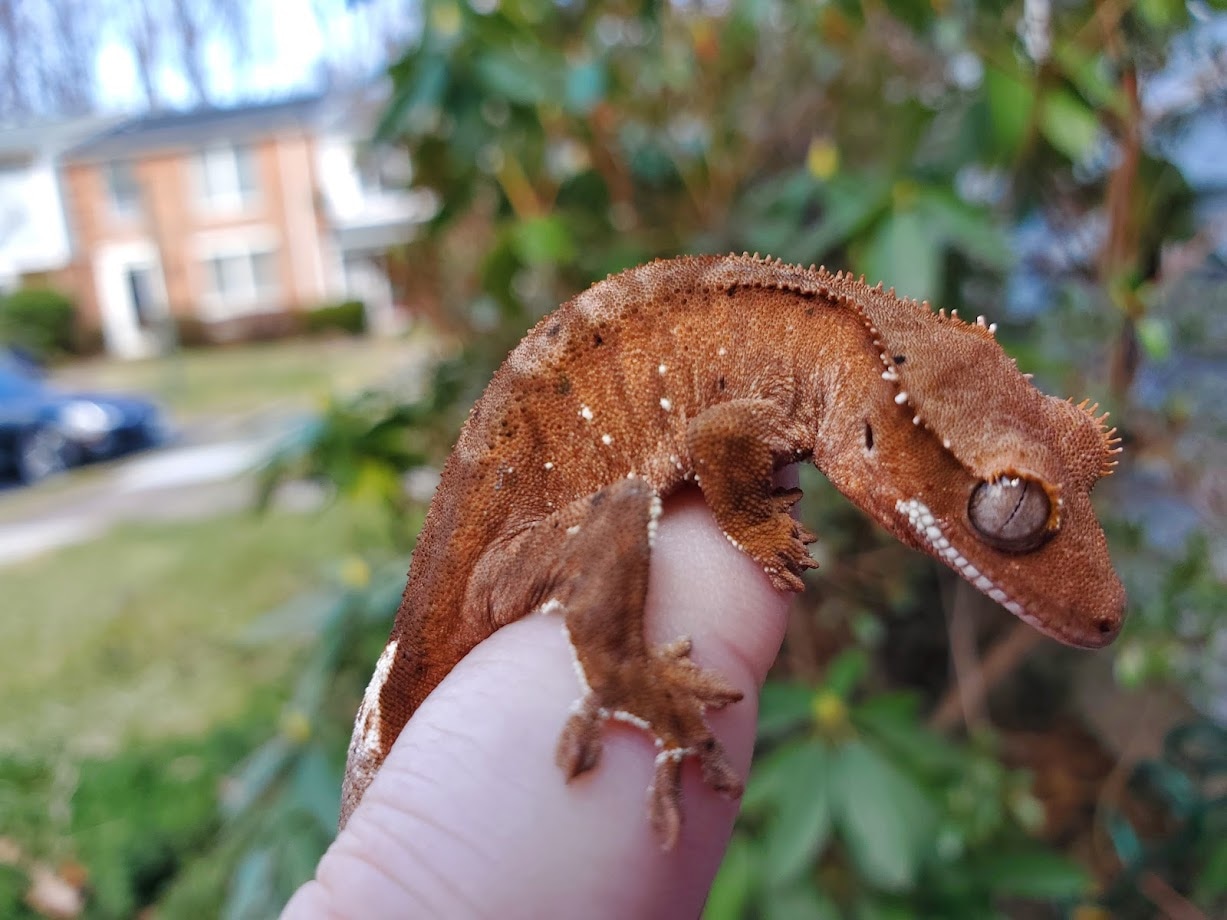
Oddlball Red Dalmatian With Portholes Crested Gecko by The Gecko Bakery


